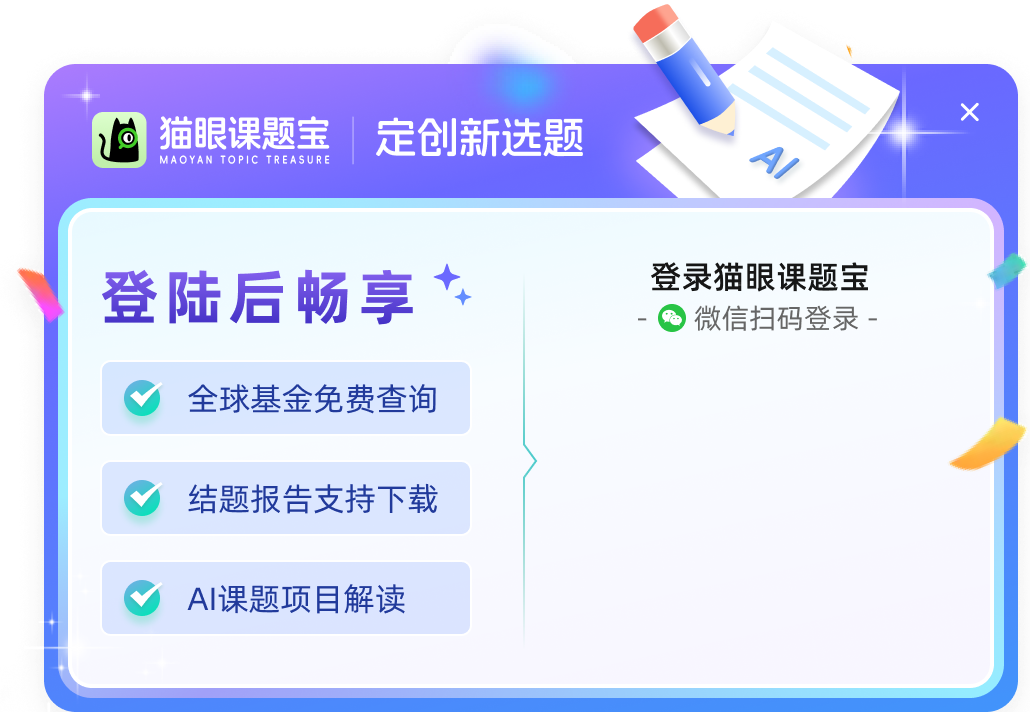Quantification of brain-derived extracellular vesicle microRNAs in blood by a liposome-mediated CRISPR assay for traumatic brain injury detection
通过脂质体介导的 CRISPR 测定对血液中脑源性细胞外囊泡 microRNA 进行定量,用于检测创伤性脑损伤
基本信息
- 批准号:10575436
- 负责人:
- 金额:$ 43.73万
- 依托单位:
- 依托单位国家:美国
- 项目类别:
- 财政年份:2022
- 资助国家:美国
- 起止时间:2022-09-01 至 2024-08-31
- 项目状态:已结题
- 来源:
- 关键词:AffectAntibodiesAstrocytesBiological AssayBiological MarkersBloodBlood CirculationBlood specimenBrainChronicClassificationClinicalClinical DataClustered Regularly Interspaced Short Palindromic RepeatsCollaborationsComplexConsumptionCraniocerebral TraumaCytolysisDataDetectionDiagnosisDiagnosticDiagnostic testsDiseaseEncapsulatedEnsureEquipmentEvaluationEventFutureGoalsHuman ResourcesImaging TechniquesIndividualInfrastructureInjuryKineticsLiposomesLongitudinal cohortMalignant NeoplasmsMeasuresMediatingMethodsMicroRNAsModelingMonitorNeurogliaNeurological observationsNeuronsOutcomePatient-Focused OutcomesPatientsPerformancePersonsPlasmaPopulationProceduresReactionReagentRecoveryReproducibilityRiskSamplingSeveritiesSignal TransductionSpecificitySurfaceSymptomsSystemTestingTimeTraumatic Brain InjuryTreatment EfficacyValidationWorkantibody conjugatebasebiomarker signaturebrain cellbrain dysfunctionbrain tissuecell typeclinical applicationclinical diagnosisclinical effectcohortdetection platformdiagnostic strategydisabilityequipment trainingextracellular vesiclesfollow-upimprovedinsightmicroRNA biomarkersmild traumatic brain injuryminimally invasivemultiplex detectionpredictive modelingrapid diagnosisresponsespecific biomarkersvesicular release
项目摘要
Abstract
Traumatic brain injury (TBI) affects 10 million people annually, with 10-15% of these individuals suffering chronic
brain disabilities. Diagnosis of TBI remains a clinical challenge because current tests are unable to classify TBI
severity or predict patient recovery due to complex and unique injury states that cannot be analyzed fully using
imaging techniques or single-marker assays. Thus, there is an urgent need for a TBI diagnosis that can rapidly
and accurately characterize TBI and identify patients at risk for long-term brain impairment. Extracellular vesicles
(EVs) in minimally invasive sample types have great potential as biomarkers for TBI since they encapsulate
biomarker signatures specific to TBI, are released by major brain cell-types, and their concentration increases
in the circulation after TBI. However, EV-based tests utilize lengthy and multi-step EV isolation methods that are
impractical for clinical lab use. To overcome these obstacles, we developed a liposome-EV fusion system, which
integrates EV isolation and TBI biomarker detection in a single step, to analyze a panel of TBI-specific miRNA
markers in EVs released from multiple brain cell-types (e.g., neurons, glia, and astrocytes) without prior EV
purification. Specificity is achieved through the interaction of brain cell-type-specific EV surface markers with
matching antibodies on the surface of liposomes loaded with ultrasensitive miRNA exponential amplification
reaction (EXPAR) system reagents to induce liposome-EV fusion. After this fusion event, the EXPAR reagents
mix with the EV miRNA cargo to create rapidly detectable signal. Since EXPAR reactions only occur after
antibody-mediated fusion events, patient samples can be directly analyzed without lysis or miRNA isolation
procedures to minimize handling or equipment requirements. Preliminary plasma and CSF data indicate our
system can distinguish a panel of EV markers among TBI and non-TBI cases. We propose to evaluate the clinical
utility of this EXPAR-FDS liposome-assay by: 1) establishing a one-step assay to directly quantify TBI-associated
markers in brain-specific EVs in unprocessed patient plasma; and 2) developing a predictive model for rapid TBI
classification and to predict future recovery to provide information on injury progression and treatment efficacy,
and to conduct a clinical validation in a longitudinal cohort using paired plasma and CSF samples from TBI and
non-TBI patients. This well-characterized cohort will allow our model to make an initial prediction immediately
after injury and check prediction accuracy using follow-up samples. This study aims to overcome current
diagnostic limitations by analyzing a panel of miRNA markers in EVs released by multiple brain cell-types to
increase clinical specificity and to comprehensively characterize the unique and complex disease state of each
individual after a TBI. We believe that our streamlined assay that analyzes minimally invasive plasma samples
without EV isolation will permit robust TBI diagnosis and follow-up evaluation to avoid the personnel, equipment
and infrastructure requirements of current approaches.
抽象的
创伤性脑损伤(TBI)每年影响1000万人,其中10-15%的人患有慢性病
脑残疾。 TBI的诊断仍然是临床挑战,因为当前测试无法对TBI进行分类
严重程度或预测由于复杂和独特的伤害状态导致的患者康复,无法完全分析
成像技术或单标记测定法。因此,迫切需要进行TBI诊断
并准确地表征TBI并确定有长期脑部障碍风险的患者。细胞外囊泡
(EV)在微创样品中,作为TBI的生物标志物具有很大的潜力,因为它们封装了
特定于TBI的生物标志物特征,由主要的脑细胞类型释放,其浓度增加
在TBI之后的循环中。但是,基于EV
对于临床实验室的使用不切实际。为了克服这些障碍,我们开发了一个脂质体-EV融合系统,该系统
在单个步骤中整合EV分离和TBI生物标志物检测,以分析一组TBI特异性miRNA
从多种脑细胞类型(例如神经元,神经胶质和星形胶质细胞)释放的电动汽车中的电动汽车中的标记物
纯化。特异性是通过脑细胞型特异性EV表面标记与
匹配脂质体表面上的抗体,该脂质体负载超敏MiRNA指数扩增
反应(膨胀)系统试剂诱导脂质体-EV融合。在此融合事件之后,膨胀试剂
与EV miRNA货物混合以创建可快速检测到的信号。由于膨胀反应仅发生
抗体介导的融合事件,可以直接分析患者样品而无需裂解或miRNA分离
最小化处理或设备要求的程序。初步等离子体和CSF数据表明我们
系统可以区分TBI和非TBI病例之间的EV标记面板。我们建议评估临床
此Expar-FDS脂质体测定的实用程序:1)建立一步测定以直接量化TBI相关的测定
未经处理的患者血浆中大脑特异性电动汽车的标记; 2)开发快速TBI的预测模型
分类并预测未来的恢复,以提供有关损伤进展和治疗功效的信息,
并使用TBI和
非TBI患者。这个特征良好的队列将允许我们的模型立即做出初始预测
受伤并使用随访样品检查预测准确性。这项研究旨在克服电流
通过分析多个脑细胞类型释放的电动汽车中的一个miRNA标记来诊断限制
提高临床特异性,并全面地表征每种独特疾病状态
TBI之后的个人。我们认为,我们精简的测定法分析了最小入侵的血浆样品
无效隔离将允许强大的TBI诊断和随访评估,以避免人员,设备
当前方法的基础架构要求。
项目成果
期刊论文数量(0)
专著数量(0)
科研奖励数量(0)
会议论文数量(0)
专利数量(0)
数据更新时间:{{ journalArticles.updateTime }}
{{
item.title }}
{{ item.translation_title }}
- DOI:
{{ item.doi }} - 发表时间:
{{ item.publish_year }} - 期刊:
- 影响因子:{{ item.factor }}
- 作者:
{{ item.authors }} - 通讯作者:
{{ item.author }}
数据更新时间:{{ journalArticles.updateTime }}
{{ item.title }}
- 作者:
{{ item.author }}
数据更新时间:{{ monograph.updateTime }}
{{ item.title }}
- 作者:
{{ item.author }}
数据更新时间:{{ sciAawards.updateTime }}
{{ item.title }}
- 作者:
{{ item.author }}
数据更新时间:{{ conferencePapers.updateTime }}
{{ item.title }}
- 作者:
{{ item.author }}
数据更新时间:{{ patent.updateTime }}
Tony Y. Hu其他文献
IP-MS Analysis of ESX-5 and ESX-1 Substrates Enables Mycobacterial Species Identification
ESX-5 和 ESX-1 底物的 IP-MS 分析可实现分枝杆菌菌种鉴定
- DOI:
- 发表时间:
2020 - 期刊:
- 影响因子:0
- 作者:
Qingbo Shu;Meena U Rajagopal;Jia Fan;Lingpeng Zhan;Xiangxing Kong;Yifan He;Suwatchareeporn Rotcheewaphan;Christopher J. Lyon;W. Sha;A. Zelazny;Tony Y. Hu - 通讯作者:
Tony Y. Hu
Decoding the blood peptidome as a new biomarker resource for cancer detection
解码血液肽组作为癌症检测的新生物标志物资源
- DOI:
10.15406/mojpb.2016.03.00099 - 发表时间:
2016 - 期刊:
- 影响因子:0
- 作者:
Yaojun Li;Tony Y. Hu - 通讯作者:
Tony Y. Hu
Blood-Based microRNA Biomarker Signature of Early-Stage Pancreatic Ductal Adenocarcinoma With Lead-Time Trajectory in Prediagnostic Samples
- DOI:
10.1016/j.gastha.2024.08.002 - 发表时间:
2024-01-01 - 期刊:
- 影响因子:
- 作者:
Warapen Treekitkarnmongkol;Jianliang Dai;Suyu Liu;Deivendran Sankaran;Tristian Nguyen;Seetharaman Balasenthil;Mark W. Hurd;Meng Chen;Hiroshi Katayama;Sinchita Roy-Chowdhuri;George A. Calin;Randall E. Brand;Paul D. Lampe;Tony Y. Hu;Anirban Maitra;Eugene J. Koay;Ann M. Killary;Subrata Sen - 通讯作者:
Subrata Sen
Tony Y. Hu的其他文献
{{
item.title }}
{{ item.translation_title }}
- DOI:
{{ item.doi }} - 发表时间:
{{ item.publish_year }} - 期刊:
- 影响因子:{{ item.factor }}
- 作者:
{{ item.authors }} - 通讯作者:
{{ item.author }}
{{ truncateString('Tony Y. Hu', 18)}}的其他基金
Multiplexed detection of cell-free M. Tuberculosis DNA and its drug-resistant variants in blood
血液中无细胞结核分枝杆菌 DNA 及其耐药变异体的多重检测
- 批准号:
10639855 - 财政年份:2023
- 资助金额:
$ 43.73万 - 项目类别:
A nanopore biosensor for leveling Mtb antigens in blood
用于平衡血液中 Mtb 抗原的纳米孔生物传感器
- 批准号:
10646134 - 财政年份:2022
- 资助金额:
$ 43.73万 - 项目类别:
Digital Nanoplasmonic Quantification of Tumor-derived Extracellular Vesicles in Plasma Microsamples
血浆微样品中肿瘤源性细胞外囊泡的数字纳米等离子体定量
- 批准号:
10684737 - 财政年份:2020
- 资助金额:
$ 43.73万 - 项目类别:
Digital Nanoplasmonic Quantification of Tumor-derived Extracellular Vesicles in Plasma Microsamples
血浆微样品中肿瘤源性细胞外囊泡的数字纳米等离子体定量
- 批准号:
10461970 - 财政年份:2020
- 资助金额:
$ 43.73万 - 项目类别:
Digital Nanoplasmonic Quantification of Tumor-derived Extracellular Vesicles in Plasma Microsamples
血浆微样品中肿瘤源性细胞外囊泡的数字纳米等离子体定量
- 批准号:
10269902 - 财政年份:2020
- 资助金额:
$ 43.73万 - 项目类别:
Detecting pathogen and host factors on extracellular vesicles for pediatric TB diagnosis and management
检测细胞外囊泡上的病原体和宿主因子,用于儿童结核病的诊断和管理
- 批准号:
10753281 - 财政年份:2017
- 资助金额:
$ 43.73万 - 项目类别:
Multiplexed quantification of circulating peptidomic signatures for EBOLA early diagnosis
用于埃博拉早期诊断的循环肽组特征的多重定量
- 批准号:
9387209 - 财政年份:2017
- 资助金额:
$ 43.73万 - 项目类别:
Direct quantitation of the circulating Mtb-peptidome for pediatric TB management
直接定量循环 Mtb 肽组用于儿科结核病管理
- 批准号:
9333558 - 财政年份:2017
- 资助金额:
$ 43.73万 - 项目类别:
Quantification of Circulating Antigens for Pediatric TB Diagnosis andTreatment Monitoring
用于儿童结核病诊断和治疗监测的循环抗原定量
- 批准号:
9241942 - 财政年份:2016
- 资助金额:
$ 43.73万 - 项目类别:
相似国自然基金
人源化小鼠筛选猴痘抗体及机制研究
- 批准号:82373778
- 批准年份:2023
- 资助金额:48 万元
- 项目类别:面上项目
抗HTNV抗体mRNA修饰MSC在肾综合征出血热治疗中的作用研究
- 批准号:82302487
- 批准年份:2023
- 资助金额:30 万元
- 项目类别:青年科学基金项目
人和小鼠中新冠病毒RBD的免疫原性表位及其互作抗体的表征和结构组学规律的比较研究
- 批准号:32371262
- 批准年份:2023
- 资助金额:50 万元
- 项目类别:面上项目
靶向肿瘤内T细胞的双特异性抗体治疗策略研究
- 批准号:82371845
- 批准年份:2023
- 资助金额:49 万元
- 项目类别:面上项目
靶向DLL3和γδ T细胞的双特异抗体对小细胞肺癌的免疫治疗活性研究
- 批准号:32300783
- 批准年份:2023
- 资助金额:30 万元
- 项目类别:青年科学基金项目
相似海外基金
The role of adaptive immunity in organophosphate induced CNS injury
适应性免疫在有机磷诱导的中枢神经系统损伤中的作用
- 批准号:
10629511 - 财政年份:2023
- 资助金额:
$ 43.73万 - 项目类别:
Defining the autoimmune mechanisms driving human MOG antibody disease pathology
定义驱动人类 MOG 抗体疾病病理学的自身免疫机制
- 批准号:
10748070 - 财政年份:2023
- 资助金额:
$ 43.73万 - 项目类别:
Astrocyte-specific TLR4 signaling and Blood Brain Barrier permeability following acute focal cerebral ischemia
急性局灶性脑缺血后星形胶质细胞特异性 TLR4 信号传导和血脑屏障通透性
- 批准号:
10572987 - 财政年份:2023
- 资助金额:
$ 43.73万 - 项目类别:
Role of Complement Receptor Activation in a Mixed Dementia Model
补体受体激活在混合痴呆模型中的作用
- 批准号:
10585080 - 财政年份:2023
- 资助金额:
$ 43.73万 - 项目类别:




















